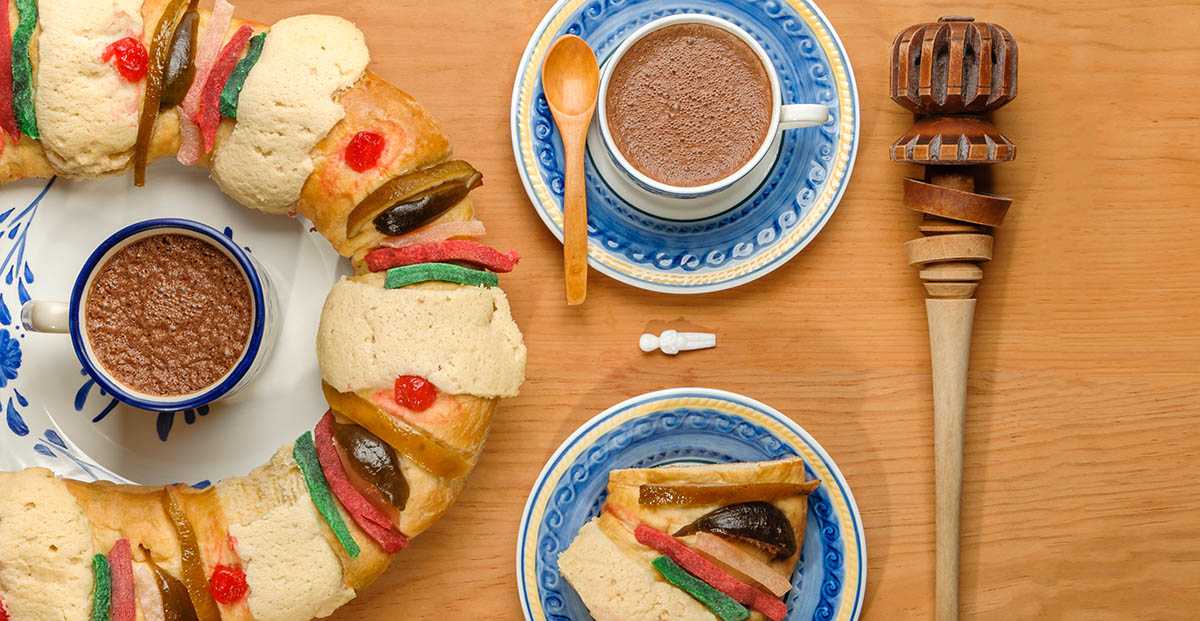News

Celebrating Mexican Christmas Traditions and Food
Have you ever wondered what Mexican Christmas traditions are like? In America, Christmas is a time when we gather with friends and family to give thanks for our blessings and reconnect. Usually, we reconnect around the dinner table and observe annual traditions kept alive from generation to generation. In Mexico, the food and traditions may be slightly different, but the spirit of gratitude and kinship around the holidays is the same! Read through these fun Mexican Christmas traditions and consider incorporating them into your next family gathering.
Mexican Christmas Traditions
The Christmas season in Mexico runs from early December, starting with celebrations in honor of the Virgin of Guadalupe, Mexico’s patron saint. The celebration comes on Día de los Tres Reyes Magos (Three Kings’ Day) on January 5th, and one last related celebration, Candlemas, on February 2nd. If you were to visit homes in Mexico, you’d find an abundance of poinsettia flowers used as decoration. A modern Mexican legend says that the poinsettia, a flower native to the region, was once a weed that miraculously turned into a beautiful flower so that a child could present it to the infant Jesus.
Christmas tree production is now a large industry in Mexico, although small artificial trees or branches from trees or shrubs can be substituted. Traditional and contemporary Christmas music fills homes and public spaces. Traditional music includes Christmas carol-like villancicos with popular songs being “Los pastores a Belén”, “Riu, riu, chiu: El lobo rabioso” and “Los peces en el río”. Spanish covers of foreign music, such as Jingle Bells, are common, and these songs are also included in Mexican Christmas traditions.
Children get their picture taken with Santa Claus, but the Wise Men are also gift-givers. Nativity scenes can get pretty elaborate in Mexican cities.
The Mexican celebration of Christmas is called “las posadas” and begins on December 16. Like many seasonal traditions, this one involves the story of the Nativity. “Posadas” is Spanish for “lodgings,” so it is fitting that it commemorates the Virgin Mary and Joseph’s difficult trek from Nazareth to Bethlehem in search of a warm place to spend the night. Mary’s pregnancy with the Christ child is central to the story. A group representing the Holy Family stands outside a series of houses, singing songs and asking for lodging. They are refused time and again until the group reaches the designated house. Finally, the travelers are granted entry, then prayer and song continue inside the home. Festive foods are shared, of course, and the night ends with a piñata in the shape of a star. This continues nightly in a different house until Christmas Eve, which usually features a midnight Mass. After dinner, children play with sparklers, called “Luces de Belen” (Bethlehem lights).
Now, the eats…
In the U.S., you’ll often see ham or roast dishes served on Christmas Day with an assortment of decadent sides and desserts. In Mexico, their Christmas dinners look a lot different! Mexican Christmas traditions around holiday food include lots of spices, meats, fruits and more. Let’s take a look at some of the traditional Christmas dishes in Mexican culture.
Pozole is a pork or chicken soup seasoned with garlic and peppers, then garnished with lettuce, cabbage, oregano, avocado, and lime – a classic dish for cold winter nights. Roasted turkey stuffed with cornbread or vegetables, seasoned with salt and pepper before serving with gravy, is called Pavo.
Rosca de Reyes is an oval-shaped cake eaten 12 days after Christmas, usually with coffee or hot chocolate, with a small plastic baby Jesus inside representing Epiphany Day or the day that the Wise Men appeared. The person who finds the plastic figure in their piece of cake is traditionally supposed to throw a party at their house to celebrate Candlemas Day on Feb. 2.
Ensalada de Noche Buena is a fruity Christmas Eve Salad. A tripe and hominy soup called Menudo is often made on Christmas Eve (aka “Noche Buena”) as cooking it can take as much as five hours. Bacalao, a cod dish, may be paired with Romeritos, tiny green leaves that are often mixed with mole and potatoes.
Tamales sometimes replace the turkey or bacalao. Pork tamales with dried pepper sauce are very common, as are chicken and vegetable tamales. Amigo offers the traditional pork tamale, savory pork filling steamed in cornmeal casings, topped with sauce and sprinkled with cheese.
Ponche is a drink made of sugar cane, prunes, apples, and the fruit of the tejocotes (a hawthorn bush). Adults prepare ponche with tequila or rum mixed in it. A holiday dessert may be Pineapple upside-down cake.
For many, it just wouldn’t be Christmas without Eggnog, and there’s a uniquely Mexican beverage called the Rompope, which uses milk, egg yolks, sugar, cinnamon, baking soda, and Tequila or Mezcal. The different flavorings are nutmeg, vanilla, almonds, pecans, orange blossom water, clove, pine nuts, and even pistachios.
¡Feliz Navidad!
If you’d like to sample some foods traditionally served in Mexico during the holiday season, visit your local Amigo Mexican Restaurant for lunch or dinner or stop in for happy hour drinks! Your local Amigo is a great place to gather with your family and friends to celebrate the holidays this year. We hope you enjoyed learning about Mexican Christmas traditions, and we hope it inspires you to celebrate holiday traditions from around the world!

